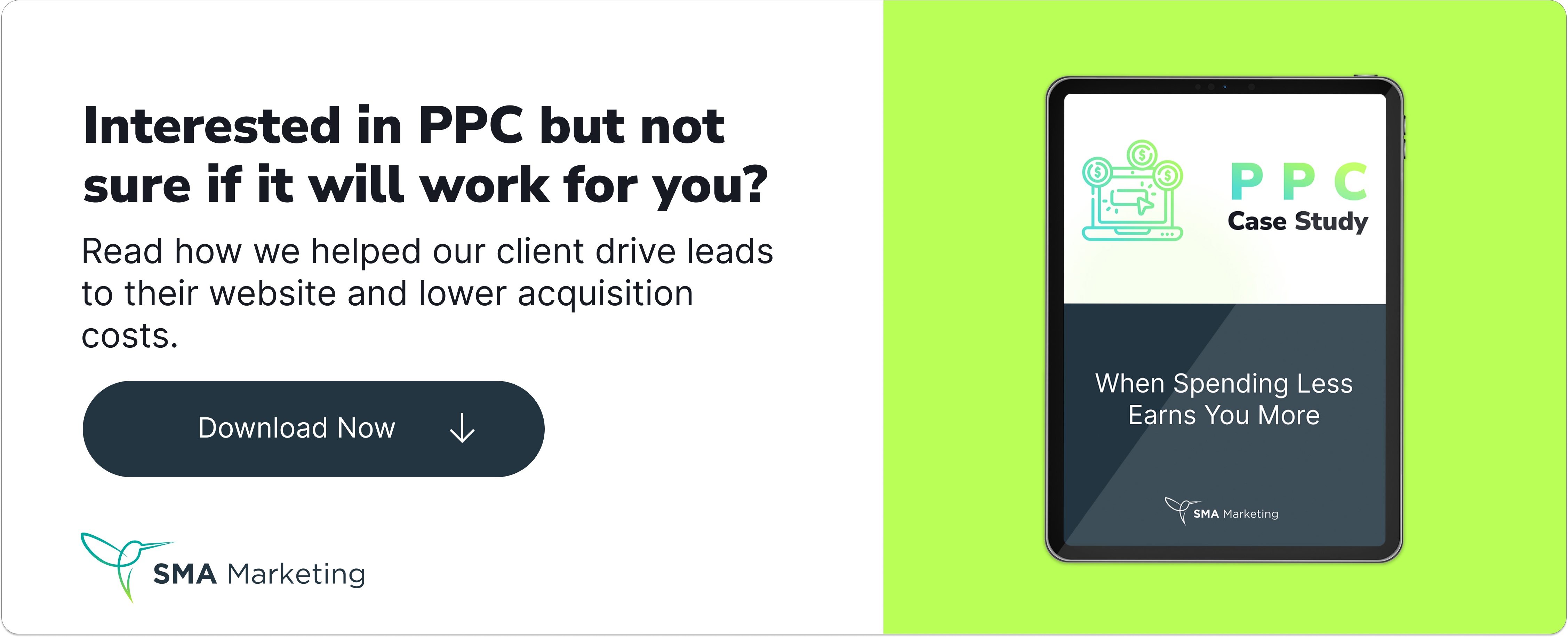
So you’ve decided to invest in a new form of advertising — pay-per-click advertising (PPC). Congratulations on making the decision to invest in the future of your business. PPC advertising is a form of online advertising where advertisers pay for each click that their ad receives. PPC marketing works by placing ads on search engines, websites, and other online platforms. When someone clicks on an ad, the advertiser pays a fee to the platform that displayed the ad.
Now comes the easy part, right? All you need to do is enter in credit card information, write some ad copy, and boom, you’re done! Okay, maybe PPC advertising is not so simple. For example, where do you do all of this? Are you planning on running Google Ads or perhaps Bing? Maybe you’d like to try your hand at running ads on a social network like Facebook. When it comes to running ads, the first step in this marketing strategy is deciding where to run them.
Google Ads, The Gold Standard
If you wanted to run ads 30 years ago, you might find yourself choosing between magazines, newspapers, television, radio, and billboards. Out of those, billboards and television ads might be considered the gold standard of their day. Billboards allow you to put an ad in the middle of a desert or in the middle of Times Square. With billboards, you can express a simple message or use a digital board to catch the eye of all who pass it. With television ads, you can run a 60-second commercial during primetime, or a 30-second ad at 2 am on Cartoon Network.
Combine these two and fast-forward to digital marketing in 2022, and you have yourself the Google Ads platform. Google Ads Run on Google, Search Partner sites, and Display Network sites, Google Ads is the largest pay-per-click platform.
There is no single platform that reaches more people in such an expansive variety of ways. Google Ads PPC campaigns allow you to advertise:
- with simple Google Search text ads
- using well-designed display ads that appear on one of the Google Search partners
- have your display ad appear on a relevant website
- use video ads that appear on YouTube before longer videos
- use video ads that appear as suggested viewings to users on YouTube
- show ads to people using apps from the Android marketplace
- the products you sell directly on the search results page
Truthfully, I could have continued that list, and you’d have to scroll to reach the bottom, but I decided to spare you.
Google Ads Pros:
- As mentioned above, the platform is incredibly versatile and can meet almost anyone’s needs.
- It’s been around for a long time, and Google invests a lot to keep it updated and growing.
- There is a complete certification program that anyone can take advantage of to learn everything you need to know. Additionally, the internet is filled with information designed to help you achieve success.
Google Ads Cons:
- The downside to the platform being so big is that you might struggle to ensure your ads are showing to the right potential customers in the right places.
- The cost-per-click can feel out of control with some industries such as legal services. With so many people trying to run ads in the same place, you end up in bidding wars.
Could Microsoft and Bing Be Your Thing?
Let’s get one thing straight, people might call it Bing Ads, but it’s really the Microsoft Ads platform, and it’s so much more than Bing.
The Microsoft Ads platform might only receive 10-15% of search traffic, but it spans the globe on sites like Yahoo, AOL, Bing, and MSN.
While the platform does not offer 100% of the ad types you can find on Google it still offers a solid selection. I really love the platform because Microsoft does not try to pretend to be a true competitor to Google Ads. In fact, they went out of their way to make their platform easy to use for those already well-versed in Google Ads. This includes an import feature that allows users to import relevant keywords, ads, campaign settings, and structures directly from Google into Microsoft. This is a time saver for anyone looking to run ads on both.
Microsoft Ads Pros:
- Less competition means lower cost. Some estimates have the average cost-per-click as low as 60% less than Google. However, this is industry-specific.
- I find it easier to use than Google search engines. Despite how similar they are, Microsoft goes that extra step to ensure you are making informed decisions.
- With the import feature, it is by far the easiest to use if you are already on Google and looking to expand your PPC campaigns.
Microsoft Ads Cons:
- The countries and currencies allowed can be limiting depending on where you are located and where you’d like to run your ads.
- The bidding strategies don’t seem to be available for as many ad types as Google offers.
- Seeing meaningful clicks can take some time since the pool is a lot smaller.
Save Money With Facebook Ads
You might have read my blog about the Facebook dollar-a-day strategy. From the title, you should know what I will say about Facebook; when it’s done right, it’s a low-cost way to get ads in front of your target audience.
Facebook will run ads on Facebook and Instagram. Both platforms have users with accounts, so there is a fixed audience base. Luckily, that audience base is huge, with over 2.7 billion active users. When deciding between Facebook and other platforms, keep in mind that the type of buyer on a social media platform can be very different from someone using Google or Bing search engines for search. A Google user might search for exactly what they need and see your ad, whereas a social media user may have expressed interest in your services at a previous date and are now seeing your ads while completing other tasks.
Facebook Ad Pros:
- When done right, you can run ads for $1-$4 daily budget and see results by targeting the right people.
- You can make ad notifications part of your regular notifications on Facebook, allowing you to stay on top of meaningful data.
- Facebook does a great job letting graphic artists showcase their skills with a lot of display options. My personal favorite is the diptych style of carousel ads.
Facebook Ad Cons:
- The user interface is terrible. Every change done to make it easier to use only seems to complicate the process further. Setting up the dollar-a-day strategy is a real-time commitment and is likely to drive someone nuts.
- The reasons ads are rejected feel arbitrary at times. It can take a lot more work to get an ad approved on Facebook.
- You’re showing ads to people who are not directly searching for your business. Rather, your audience is on Facebook to have fun, and you are marketing to them during their fun. There is nothing wrong with that, but doing it properly can take more work than other platforms require.
Getting Started
Once you have decided which popular platform will work best for you, it’s important to take the time to set up your ads properly for a successful campaign. The next steps for setting up a PPC advertising campaign, include:
- Select your ad type. There are four main types of PPC ads: search ads, display advertising, video ads, and shopping ads.
- Set your budget. Determine how much your PPC advertising spend per day or per month will be.
- Write your ad copy. This is the text that will appear in your PPC ad. Make sure your high-quality content includes your target search terms so that your ad is relevant to the products or services you are promoting. Ad copy is critical to your click through rate.
- Choose your landing page. This is the page on your website that users will be taken to after they click on your ad. It’s important to make sure that this page is relevant to the ad copy and that it contains a strong call to action.
- Test, test, test! Always test different versions of your PPC ads to see which ones are performing the best. Try changing the ad copy, the landing page quality, or the targeting options to see what works best for your business.
By following these simple steps, you can create a PPC ad campaign that will help you to reach your target audience and achieve your marketing goals. If you have any questions about your platform options or what to do next, please know that the team at SMA is more than happy to assist you.
Editor’s Note: This article was originally published in December 2020 and has been updated with fresh content.





More Stories
Donkervoort F22 Is A Lightweight Missile
T-swift dominates the Billboard Hot 100
Links + Before + After Photos of My Brothers Bedroom Makeover!